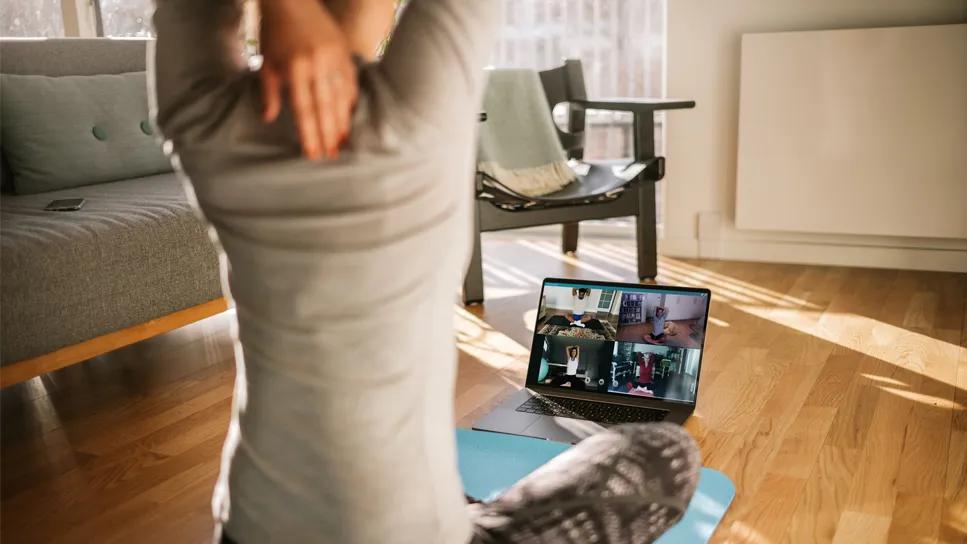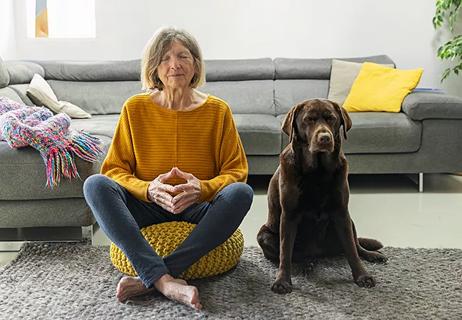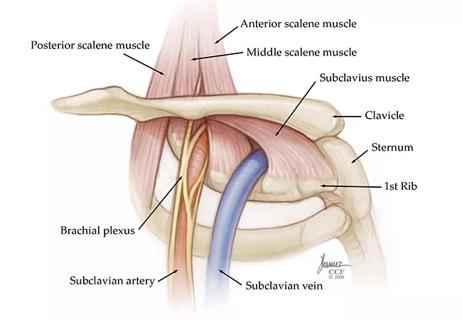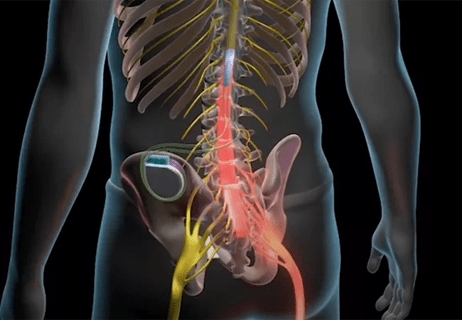Study participants also reported better sleep quality and reduced use of pain medications

Chronic low back pain, a common complaint that affects as many as 20% of adults worldwide, is the leading cause of years lived with disability. In severe cases, back pain can make it difficult to walk, rest, work or perform daily activities.
Advertisement
Cleveland Clinic is a non-profit academic medical center. Advertising on our site helps support our mission. We do not endorse non-Cleveland Clinic products or services. Policy
However, a new study conducted by Cleveland Clinic researchers shows that yoga, when integrated into a patient’s usual healthcare routine, may reduce low back pain, improve sleep and mitigate reliance on pain medication. Indeed, research participants who regularly engaged in an online, synchronous yoga class reported less discomfort and better sleep when compared with those who did not have access to the 12-week virtual program. The findings were recently published in JAMA Network Open.
“There are a number of barriers, including cost and transportation, that can make in-person yoga classes impractical,” explains Robert Saper, MD, MPH, chair of the Department of Wellness and Preventive Medicine at Cleveland Clinic, and senior author of the study. “Although we’ve long understood that online classes may be a more convenient option for many people, we were pleased to find that a virtual yoga practice can provide many of the long-term benefits derived from live, face-to-face instruction.”
The holistic approach to well-being that is often inherent in yoga practice may further influence how pain affects an individual’s overall health, Dr. Saper says. “Although an anti-inflammatory medication can address a patient’s physical symptoms, yoga has the capacity to also address the emotional and social components of pain while reinforcing one’s meaning and purpose,” he says.
The 24-week randomized clinical trial evaluated 140 Cleveland Clinic employees who had reported moderate amounts of pain for at least three months. The average age of participants was 48 years, and more than 80% were female.
Advertisement
The investigators began by evaluating participants’ baseline measures, such as pain intensity and back-related function using the Roland Morris Disability Questionnaire. The individuals were then randomly assigned to either a “yoga now” cohort or a “yoga later” control group. Those in the latter group were given access to the program after the study was completed.
Participants in the yoga now cohort attended a 60-minute, live-streamed class each week taught by Cleveland Clinic instructors. The participants, who were encouraged to practice independently at least 30 minutes each day, were also given access to instructional yoga videos and received a mat and supplemental packet explaining the postures. Participants in the yoga later control group continued with their usual medical care.
The 12-week program was designed to maximize effectiveness and safety, adapted for virtual delivery and intended for sufferers of chronic low back pain. The study protocol specifically focused on Hatha yoga, a style that emphasizes static holds and breathing techniques.
Before starting the trial, participants rated their low back pain, on average, as 5.7 on a 0-10 scale. At the end of 12 weeks, the yoga now cohort reported an average reduction in pain intensity of 1.5 points; after 24 weeks, participants reported a mean reduction in pain intensity of 2.3 points.
Additionally, 34% fewer members of the yoga now group reported using pain medication compared to the yoga later group. The yoga now cohort also reported significantly better sleep quality. At 24 weeks, the improvements in pain and back-related function were sustained.
Advertisement
“Yoga is proving to be a valuable component of the comprehensive management of low back pain, a condition for which traditional therapies often fall short,” Dr. Saper adds. “It’s time to increase access to this safe and effective treatment.”
Advertisement
Advertisement

Researchers seek solutions to siloed care, missed diagnoses and limited access to trauma-informed therapies

Two-hour training helps patients expand skills that return a sense of control

Program enhances cooperation between traditional and non-pharmacologic care

National Institutes of Health grant supports Cleveland Clinic study of first mechanism-guided therapy for CRPS

Pain specialists can play a role in identifying surgical candidates

Individual needs should be matched to technological features

New technologies and tools offer hope for fuller understanding

Pathophysiology, diagnosis, treatment and a COVID-19 connection